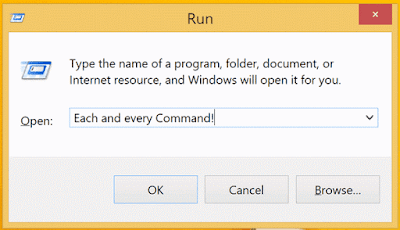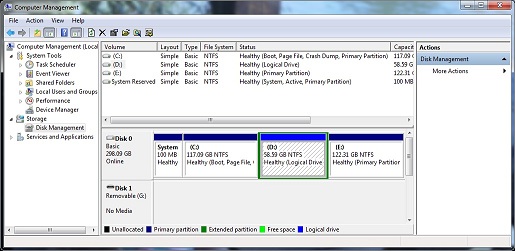10 Useful RUN Commands on Windows
 |
| Useful RUN Commands Windows |
If you just learn about computer and still confuse about run command, according to Wikipedia :
On the Microsoft Windows Operating system, the Run command is used to directly open an application or document whose path is known. It functions more or less like a single-line command line interface.
Requirements:
Windows O.S
10 Useful RUN Commands on Windows:
To run command, you can press the Windows keyboard logo and press R (Win logo + R)
1. chkdsk
CHKDSK (short for "check disk") is a system tool in DOS, OS/2 and Windows. It verifies the file system integrity on hard disks or floppy disk and fixes logical file systemerrors. It is similar to the fsck command in Unix.
2. compmgmt.msc
 |
| compmgmt.msc - Useful RUN Commands Windows |
Microsoft Management Console (MMC) is a component of Windows 2000 and its successors that provides systemadministrators and advanced users an interface for configuring and monitoring the system.
Useful to monitor the computerstatus. View the shared folder, connected user, scheduler, etc
3. devmgmt.msc
 |
| devmgmt.msc - Useful RUN Commands Windows |
4. dxdiag
 |
| dxdiag - Useful RUN Commands Windows |
DxDiag ("DirectX Diagnostics") is a diagnostics tool used to test DirectX functionality and troubleshoot video- or sound-related hardware problems. DirectX Diagnostic can save text files with the scan results. These files are often posted in tech forums or attached to support emails in order to give support personnel a better idea of the PC the requester is using in case the error is due to a hardware failure or incompatibility.
5. cleanmgr
 |
| cleanmgr - Useful RUN Commands Windows |
It was good if you keep your computer clean. By running this tool, you can clean some trash or cache file to make some free space on your system.
6. dfrgui
7. diskmgmt.msc or diskpart
 |
| diskpart - Useful RUN Commands Windows |
8. secpol.msc
 |
| secpol.msc - Useful RUN Commands Windows |
With the local security policy, you can control:
– Who accesses your computer.
– What resources users are authorized to use on your computer.
– Whether or not a user or group's actions are recorded in the event log.
9. perfmon
 |
| perfmon - Useful RUN Commands Windows |
10. gpedit.msc
 |
| gpedit.msc - Useful RUN Commands Windows |
Of course what we describe above about 10 Useful RUN Commands on Windows has not cover all the functionality of the Windows itself. If you have some suggestion about another useful RUN command, you can contribute by submitting your comment below.
Hope you found it useful😁😊👍



Post a Comment